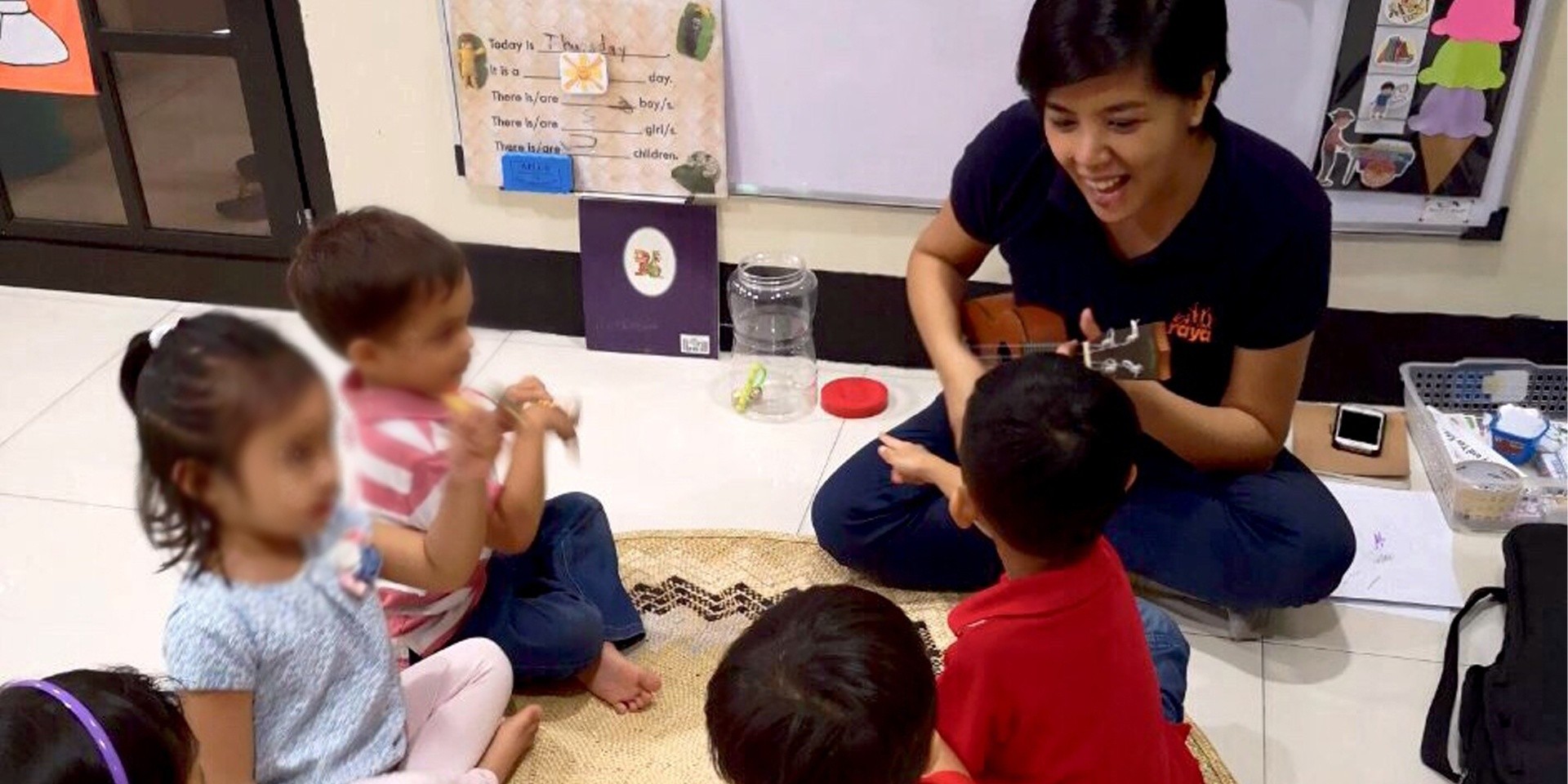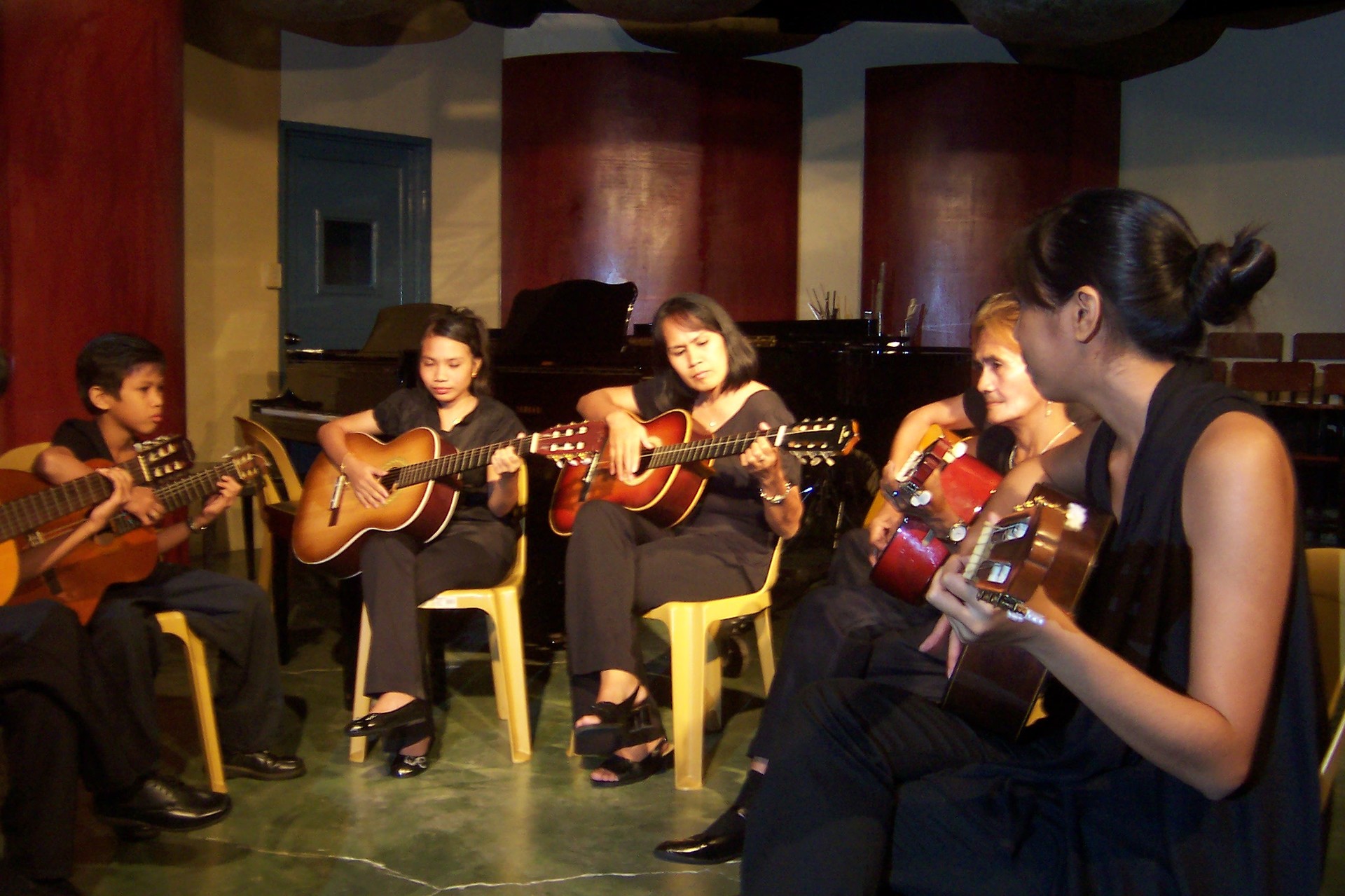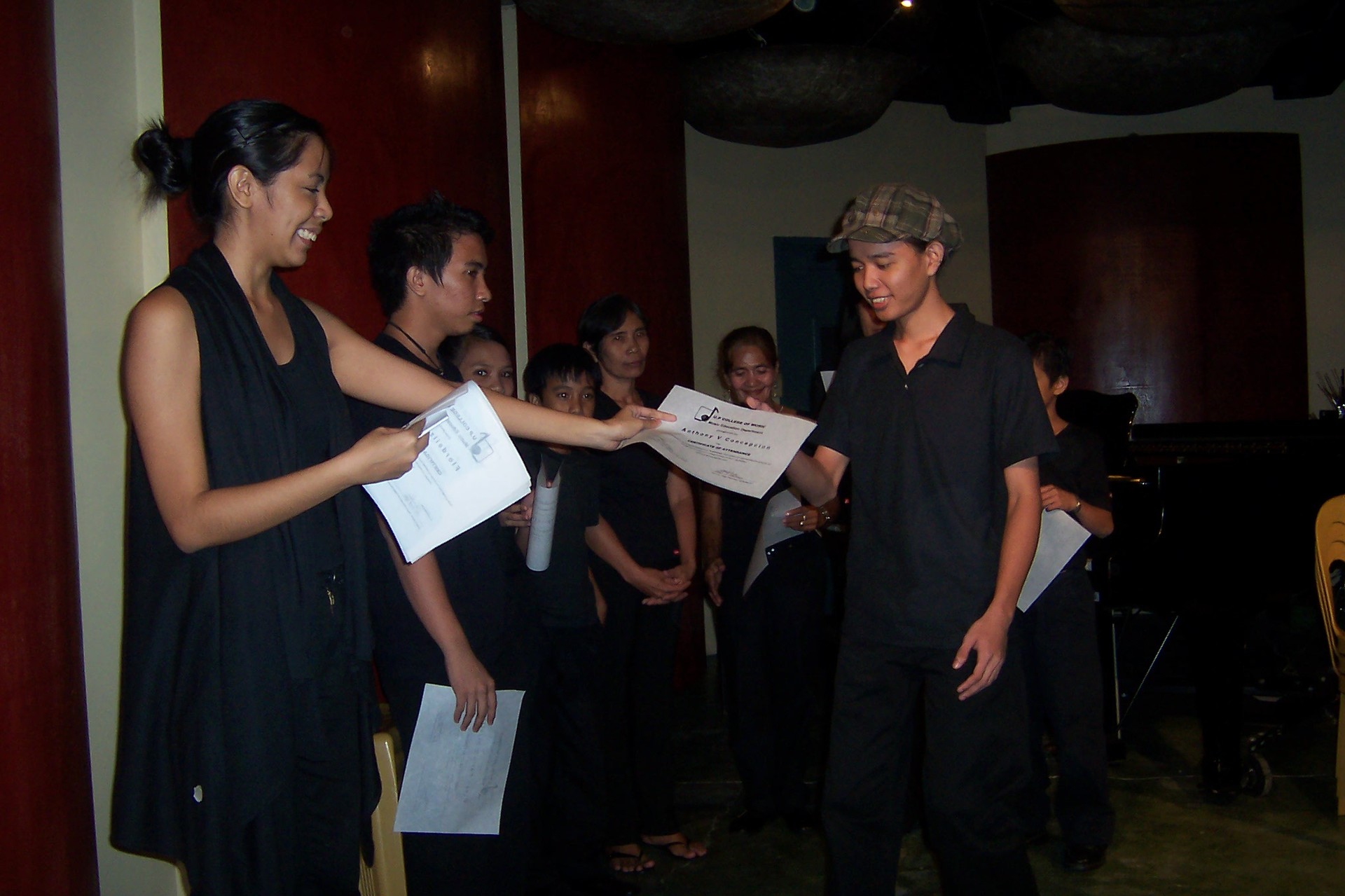Music is the gift that keeps on giving, and this year it just might start giving a little more.
Preschool teacher and music instructor Thea Tolentino has a goal: to bring music therapy to the Philippine as a more accessible form of mental health treatment. She's heading out to the University of Melbourne in Australia to fulfill a longtime dream of helping people with mental illnesses through the healing power of music.
Assembly Generals, Noel Cabangon, The Diegos, Tarsius, and more to perform at music therapy fundraiser Better with Music
We caught up with Thea before the show to talk about what it takes to bring Music Therapy into the country and her plans after her studies in Australia.
Tell us about what inspired you to pursue this goal in bringing music therapy to the Philippines and what it takes to make it happen.
Back when I was in the College of Music at UP Diliman (around 2001), we were given a research assignment on the cognitive effects of music. This is how I came to learn about how music can be therapeutic. The information available at that time was very limited, and it frustrated me. But it sparked a great deal of curiosity. So from time to time throughout college and afterwards, I would read up and do my own research. The more I learned about music therapy the more questions I had. And of course, the more I wished I could make this practice available to Filipinos. Imagine, playing music (that thing I love to do the most) and helping other people as well? Ain’t that the dream!
Whenever I would hear about people struggling to recover from physical rehabilitation, people who feel emotionally disconnected, those who suffer from intense pain, trauma, stress and depression I always think to myself, “If only we had music therapy in the Philippines to speed up their recovery or improve their quality of life. ”
In short, matagal ko na ito gustong gawin but I was enjoying my job as a preschool teacher and music teacher so much that I always thought to myself: ‘there’s another time for this.’ Inisip ko rin na taking this course abroad would be a steeper mountain to climb kaya hintayin ko nalang i-offer ang kurso na ito at the postgraduate level at magkaroon ng licensing board for music therapists sa Pilipinas.

But over the last couple of years I noticed how suicide rates and mental illnesses among the youth are climbing at an alarming rate. I’ve also witnessed how people close to me, friends and family are struggling with this [condition]. What’s terribly frustrating is the fact that mental health interventions in the country are very limited. The usual recommendations are regular consultations with a psychiatrist and antidepressants, both of which are very expensive. The need to expand access to mental health care has become urgent. I knew I couldn’t put this off any longer. But I also knew it isn’t going to be an easy path to take. Despite that, I took the first step. I applied for the Master of Music Therapy program at the University of Melbourne, and got accepted!
It has been a long and arduous journey just to get to this point—standing at the front of the gates. Alam ko naman na hindi ito magiging madali. True enough, it was a struggle to prepare and compile all requirements needed for the course from government documents, English proficiency exams to university essays. Then there’s the whole fundraising part. As we all know, schools abroad are not cheap. My salary as a teacher was enough to be comfortable here, but it surely isn’t enough for a course and life abroad. My family loaned me some money but I still needed to raise a significant amount. I wrote solicitation letters, applied for grants and scholarships, approached foundations and government officials but to this day have not received any help. That also took a lot of energy and time to do, and the lack of response has also been a challenge. I left a job I love, I’m about to leave my home, friends, my family, and my very supportive husband behind. I’ll be navigating through an entire new world on my own. Pero alam ko rin that it will all be worth it in the end. Kung gusto mo talaga ang isang bagay gagawa at gagawa ka ng paraan para makamtan mo ito. Hindi puwedeng hindi.
What it takes to make it happen:
In my experience applying at the University of Melbourne a major requirement is having finished a bachelor’s degree in music, and meeting the panel’s standards for creativity and musicality by going through a difficult audition process.
One also has to complete an accredited postgraduate course in music therapy and clock in 640 hours of clinical training to be qualified to take the board exam and be a board-certified music therapist.
In 2018, the Duterte administration signed RA 11306, or the Philippine Mental Health Law. The law, which was proposed by Senator Risa Hontiveros, aims to give better access to mental health care, provide mental health services down to the barangays, improve mental health care facilities, and promote mental health education in schools and workplaces. This breakthrough law is an important step to making music therapy in the Philippines happen because (hopefully) it will ensure government support for initiatives in addressing mental health treatments like music therapy and early-stage interventions.

How did music first start feeling therapeutic for you?
I believe music provides me with so much joy, comfort and strength because of my personal experiences with it when I was growing up.
A huge chunk of my childhood was devoted to listening to my dad’s extensive collection of albums from the 60’s to the late 80’s. I enjoyed making up songs with my sisters, and sometimes on weekends or lazy afternoons we’d gather around my Kuya who played the guitar and we’d sing songs of the Beatles or Eraserheads while someone held up the lyrics on a Jingle magazine. I spent so much time listening to the radio with a blank tape ready to record so I can make a compilation of my favorite songs. Once the blank tape is full, I will write all the lyrics down on my notebook by playing and pausing the tracks just so I can sing along as I play the cassette tape over and over. Those days before Google, Ultimate Guitar, and Spotify, where making music meant shared moments with your family are the reason why music always had a restorative effect on me.

Now I make playlists for almost everything. Because music instantly elevates my mood it naturally creates a positive impact on my behavior as well. So getting up early is easier with a morning playlist. Restoring my strength after a long day at work is faster with an after-work playlist. Washing dishes or cleaning the house isn’t that big of a chore when you have a 90’s guilty-pleasures playlist blasting in the background.
The word therapeutic doesn’t always have to equate to healing as in healing of the sick. It can start with the feeling of relief, comfort, a release of pent up emotions or distress, to have the drive to accomplish menial tasks or as simple as feeling a moment of happiness.

What are the challenges you face in bringing music therapy to the Philippines?
I think one of the biggest challenges is raising public awareness and dealing with misinformation. How to explain music therapy as a legitimate health profession and distinguishing it from other musical practices that claim to be the same as music therapy.
Also how to get rid of the stigma attached to the word “therapy”.
Another equally important challenge is getting support from foundations, from the government and getting people to believe in it as much as I do.
What are your plans as soon as you get back?
Educate. Practice. Serve.
In general, it’s to make mental health care interventions more accessible by embedding music therapy programs in school systems and health centers. I will also conduct symposiums and workshops to transfer knowledge, tools, and skills to medical practitioners, teachers, caregivers, and musicians.
As soon as I get back to the Philippines, my plan will unfold into several phases. One is to address individualized music therapy needs, where I focus on students diagnosed with stress, anxiety, and depression. Another is to create a curriculum where I provide teachers with music therapy foundations that they can apply in their own contexts. And lastly, one that will equip public school teachers and healthcare workers with the knowledge and tools to embed music therapy programs in school systems and local health centers. These are all part of my main goal to make music therapy interventions free and accessible to people in underserved communities.
How did you come up with the lineup for Better with Music?
My husband is a musician and a music teacher just like me so naturally our circle of friends are in the music scene. When I told them I was holding a fundraiser they were the ones who were eager and willing to support the cause.
Because music therapy utilizes all kinds of music from classical to electronica I wanted different genres of music represented in the event as well. So on the 13th we have folk, hip-hop, grunge, electronica, jazz, new wave, indie rock and so much more! The event is open to the public. So to anyone who wants to show their support for music therapy, please come join us make Filipino lives Better With Music!
Better with Music is scheduled to take place at Tomato Kick in Tomas Morato, Quezon City on February 13 (Thursday).

Like what you read? Show our writer some love!
-






